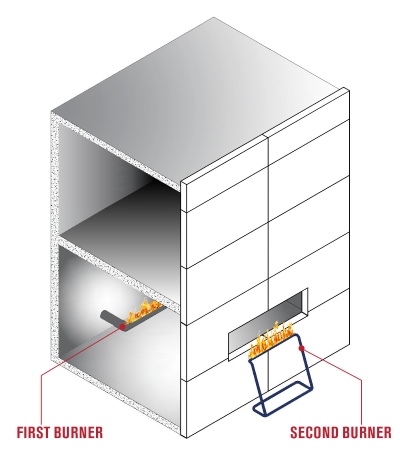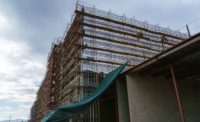Every industry has a cycle of innovation. Trends come and go as companies compete to improve products; some move the needle, and some don’t. Every once in a while, a product changes the game and resets standards. These innovations aren’t always as dramatic as Levi Strauss creating blue jeans or Henry Ford conceiving the assembly line, but they’re easy to find by one measure: longevity. Some innovations have sticking power because they just work, and polyiso insulation falls into that category.
Better for the Environment
The movement toward environmentally friendly construction is less a trend and more of a tectonic shift. Not only does polyiso provide insulation that meets or exceeds most environmental codes, but producing it creates minimal environmental impact. According to polyiso manufacturers’ environmental protection declarations (EPDs), little energy is required to make the product.
All polyiso products are manufactured with zero ozone-depleting blowing agents and are CFC-free, meaning they contain no chlorofluorocarbons. These sustainable manufacturing practices eliminate greenhouse gas emissions from these products, giving them zero global warming potential (GWP). Some polyiso products also are GreenGuard Gold certified and can be made with non-halogenated components that fit even the most stringent environmental codes. Microbial resistance is another added benefit, meaning polyiso products won’t support harmful mold or mildew or need to be replaced due to minimal moisture exposure.
Nearly all polyiso insulation is manufactured using recycled materials, further contributing to its range of sustainable attributes. While the percentage of recycled material by weight will vary based on the individual manufacturer, the product thickness and type of facer, this is common practice throughout the industry. Many of the facers on polyiso products also contain up to 100 percent recycled materials. This variety of environmentally friendly factors through the entire lifecycle of polyiso insulation products adds up to one of the greenest insulation options available.
Insulation Factor—It Works
One reason that polyiso insulation is such a lasting product is simple: it’s a great insulator. Polyiso provides exceptional insulation in a wide range of climates all year round—from average winter lows of 18 degrees in Colorado to hot, humid summers in the South. With the highest R-value of any rigid insulation, it maintains its efficiency and performance throughout temperature fluctuations.
In addition to having a high R-value, the installation method of polyiso foam board creates a near-seamless building envelope that protects from thermal bridging. When it comes to the primary job of insulation, polyiso is proven to be an incredibly effective solution. The rigid boards don’t sag and board joints can be taped for air barrier performance.

Example of NFPA 285 fire testing methods. Polyiso meets fire safety requirements to be NFPA 285-compliant.
All-Important Fire Safety
When it comes to insulation, just like most building materials, safety should be the builder’s number one concern. Fire safety is one of the most important factors in choosing insulation, and polyiso performs incredibly well in these scenarios, too. Polyiso out-performs other rigid foam insulation types, and it meets stringent fire safety requirements like NFPA 285 and NFPA 286 for wall assemblies. Polyiso insulation is the rare product that does not compromise between important safety requirements and performance of its primary energy-saving function.
Suitable for Moisture Control
In wall applications, polyiso insulation can perform an additional function as a water-resistive barrier (WRB) when the joints are properly treated. This can save time and money on installation and result in a tighter, more reliable building envelope. Most importantly, though, polyiso can withstand exposure to moisture without being damaged or decreasing in performance.
Polyiso might not be on the same level of innovation as the wheel or the iPhone, but this insulation has many characteristics that make it adaptable to ever-changing trends in the building industry. As society moves further down the path of sustainability and energy efficiency, polyiso will continue to be an excellent choice for more and more projects and advanced code requirements. In fact, PIMA (Polyiso Insulation Manufacturers Association) released a report earlier this year stating that more than 54 billion board feet of polyiso insulation products have been shipped in the last decade. As the qualities of polyiso insulation become the norm, including excellent energy efficiency, advanced fire safety, moisture control properties and green manufacturing, this building material will set the standard for decades to come.



